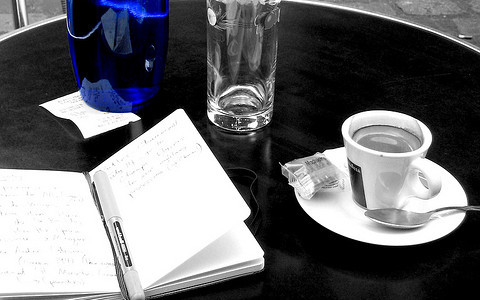Weekly Science Picks

Welcome to some of this week’s best science happenings on the interweb space!
The first question is simple: can you name a female statistician? Epidemiologista answers its own question with a nice profile of Dr Janet Lane-Claypon: epidemiologic pioneer.
Can you name a female statistician?
“We read about statistics every day: be it the predicted winner of a football league, the association between the weather and mortality, or a newly discovered link between an inanimate object and cancer. Statistics are everywhere. And perhaps even more so this year, as 2013 has been hailed as the International Year of Statistics. Despite all this attention for numbers, we generally don’t know a lot about the people hiding behind their computers churning them out. With media attention for people like Nate Silver and Hans Rosling, some are now able to name at least one statistician, but, stepping it up a level, could you name a female statistician?”
Drones. We all seem to be talking about it at the moment. Khalil, Scilogs Community Manager has a fascinating story on the new use of the tech, apart from US targeted killings.
Brace Yourselves, Drone Journalism Is Coming
“Drone journalism appears to make so much sense that two universities in the US have already incorporated drone use in their journalism programs. The Drone Journalism Lab at the University of Nebraska and the Missouri Drone Journalism Program at the University of Missouri both teach journalism students how to make the most of what drones have to offer when reporting a story. They also teach students how to fly drones, the Federal Aviation Administration (FAA) regulations and ethics.”
Moments after I tweeted the “Can you name a female statistician?” link, cyberspace echoed back at me with an answer — Hilary Parker. She has a great blog with a title sufficiently geeky enough to make me giggle.
Hilary: the most poisoned baby name in US history
“I think it’s pretty safe to say that, among the names that were once stable and then had a sudden drop, “Hilary” is clearly the most poisoned. I am not paying too much attention to the names that had sharp drops in the late 1800s because the population was so much smaller than, and thus it was easier to drop percentage points without a large drop in raw numbers. I also did a parallel analysis for boys, and aside from fluctuations in the late 1890s/early 1900s, the only name that comes close to this rate of poisoning is Nakia, which became popular because of a short-lived TV show in the 1970s.”
Bodyhorrors has a great account of the dentists, barbers, tattoo artists, and all sorts of street practitioners that set up shop on the streets and sidewalks of India, and their role in disease transmissions.
Adventures in Dentures: The Street Dentists, Barbers & Tattoo Artists of India
“Pushkar and Pyara Singh, otherwise known as Doc-Junior and Doc-Senior, practice their trade on a sidewalk near a pretty fuchsia bougainvillea bush outside an unidentified train station, close to a stash of rickshaws awaiting customers disgorged from the busy station. Pyara Singh earnestly tells the camera, “The only difference between the rich doctors and us is that they have fancy chairs, fan, servants, x-ray and other gadgets. They take a lot of money. Normal people can’t afford that.” In the film, the duo mix methyl methcrylate paste, repair and install dentures, file teeth, inject who-knows-what substances and “practice dentistry” to their best ability without gloves, face masks, autoclaves to sterilize equipment and tools, or any proper sterile technique or infection control practices out on the open street. In one viscerally tough scene, the men inject a watery rose-colored liquid into a middle-aged woman’s mouth then use pliers to wrench a tooth that’s promptly discarded for the flies on the sidewalk. The scene made me squeal in terror so, for the faint of heart, know that the scene starts at 2:52 and lasts until 3:12.”
So there you have it, as always an eclectic mix of science, science-isms, and science-like shenanigans.
Image — source
 Follow
Follow